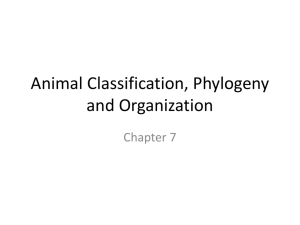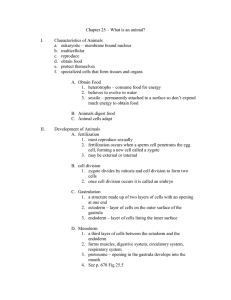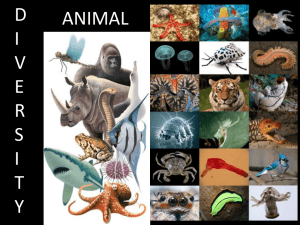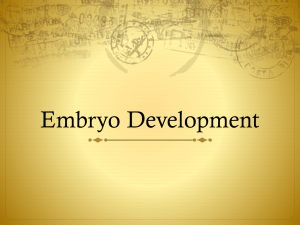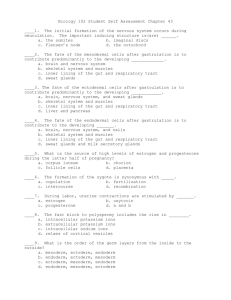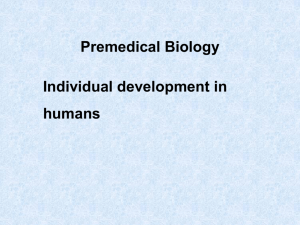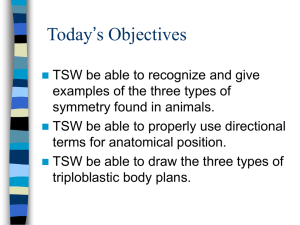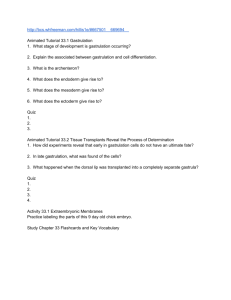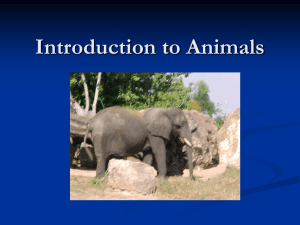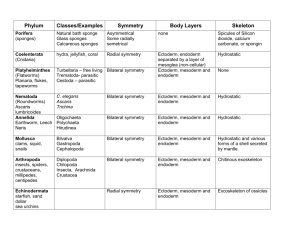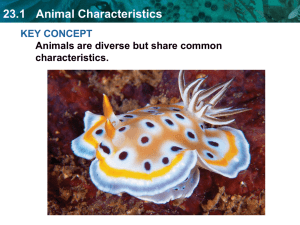Worksheet 10 - Iowa State University
advertisement
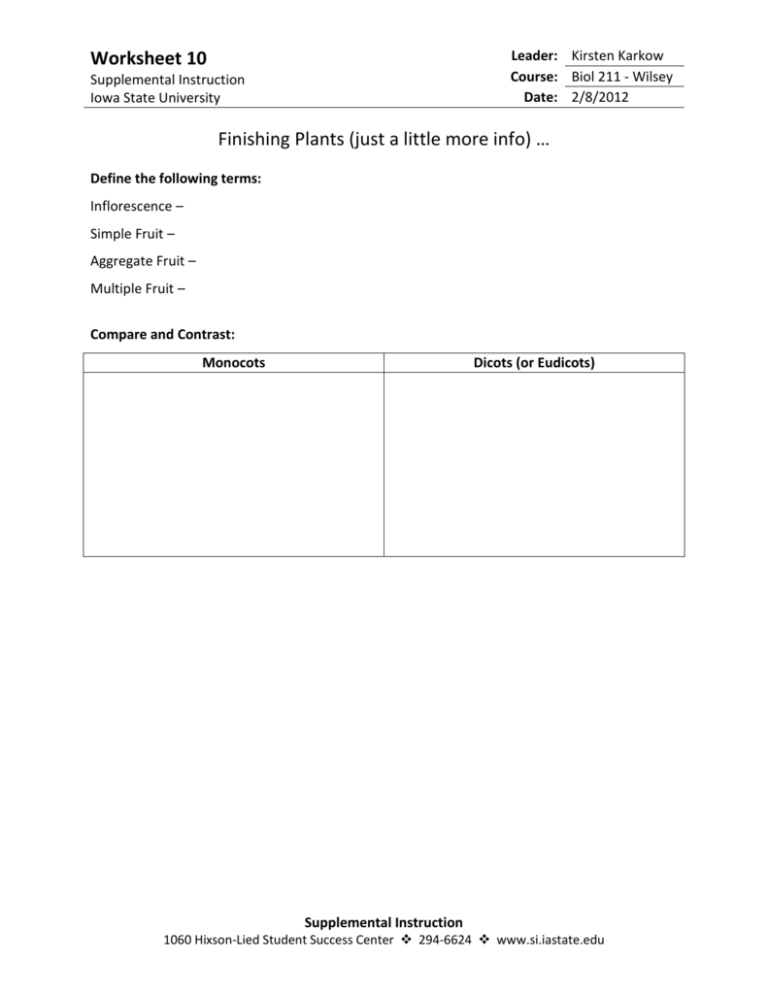
Leader: Kirsten Karkow Course: Biol 211 - Wilsey Date: 2/8/2012 Worksheet 10 Supplemental Instruction Iowa State University Finishing Plants (just a little more info) … Define the following terms: Inflorescence – Simple Fruit – Aggregate Fruit – Multiple Fruit – Compare and Contrast: Monocots Dicots (or Eudicots) Supplemental Instruction 1060 Hixson-Lied Student Success Center 294-6624 www.si.iastate.edu Starting Animals … Circle the correct answer(s): 1. Animals feed by (ingestion, absorption, photosynthesis). 2. Animals are (prokaryotic, eukaryotic) and (unicellular, colonial, multicellular). 3. Animals are held together by (cell walls, peptidoglycan, cellulose, chitin, collagen). 4. Animals are unique in that almost all animals have (digestive cells, muscle cells, respiratory cells, nerve cells). The only exceptions are the sponges. 5. In all animals, embryonic development is controlled by (Protomorph genes, Mendel genes, Hox genes). 6. (T, F): All animals display structural symmetry. 7. (T, F): All animals have true tissues. Label the image with the following terms: zygote, blastula, gastrula, blastocoel (x2), blastopore, endoderm, ectoderm, gastrulation. Define the following terms: Cleavage – Gastrulation – Ectoderm – Endoderm – Mesoderm – Metazoa – Fill in the follow information. “Blanks” refer to the clades the animals are divided into at that point. Compare/describe the terms in the boxes. Split #1: ______________________ vs. ______________________ Diploblastic Triploblastic Split #2: ______________________ vs. ______________________ Radial Symmetry Bilateral Symmetry Split #3: ______________________ vs. ______________________ Protostomes Split #4: ______________________ vs. ______________________ Deuterostomes Gastrovascular Cavity
